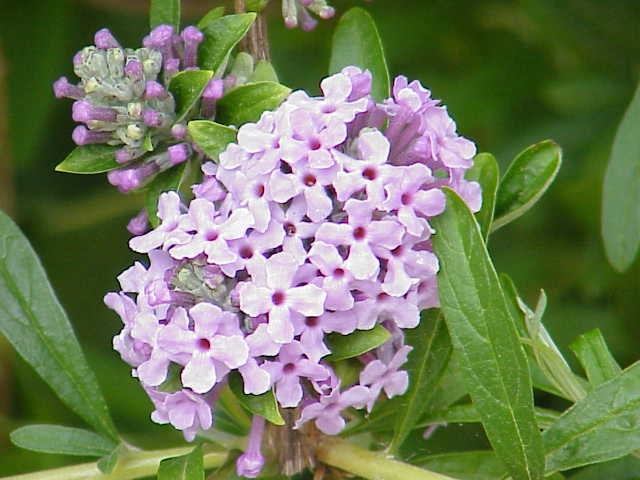Alternate-Leaf Butterfly-Bush
(Buddleja alternifolia)
Alternate-Leaf Butterfly-Bush (Buddleja alternifolia)
/
/

Kurt Stüber [1]
CC BY-SA 3.0
Image By:
Kurt Stüber [1]
Recorded By:
Copyright:
CC BY-SA 3.0
Copyright Notice:
Photo by: Kurt Stüber [1] | License Type: CC BY-SA 3.0 | License URL: http://creativecommons.org/licenses/by-sa/3.0/ | Uploader: Topjabot | Publisher: Wikimedia Commons | Title: Buddleja_alternifolia0.jpg | Notes: {{Information |Description=Cerinthe major |Source=Photo of plant on cornish hedge |Date=30 April 2007 |Author=User:Vernon39 }} |

































Estimated Native Range
Summary
Buddleja alternifolia, commonly known as Alternate-Leaf Butterfly-Bush, is a deciduous shrub native to riverbanks and rocky slopes in China. It typically grows to a height of 8-15 feet and a width of 10-18 feet. The plant is notable for its arching branches and dense clusters of fragrant, lilac-purple flowers that bloom in late spring to early summer. The flowers are particularly attractive to butterflies, hence the common name. The foliage is arranged alternately, which is unusual for the genus, and the leaves are narrow and gray-green in color.
Alternate-Leaf Butterfly-Bush is valued for its weeping form and profuse flowering, making it an excellent choice for creating a focal point in a larger garden. It is also used in mixed borders and for attracting pollinators. This species is fully hardy and prefers a sunny to partially shaded location with well-drained loamy soil. Pruning should be done immediately after flowering to maintain shape and promote vigorous growth. While it is easy to propagate from cuttings, care should be taken to prevent it from becoming invasive, as it can self-seed prolifically in favorable conditions.CC BY-SA 4.0
Alternate-Leaf Butterfly-Bush is valued for its weeping form and profuse flowering, making it an excellent choice for creating a focal point in a larger garden. It is also used in mixed borders and for attracting pollinators. This species is fully hardy and prefers a sunny to partially shaded location with well-drained loamy soil. Pruning should be done immediately after flowering to maintain shape and promote vigorous growth. While it is easy to propagate from cuttings, care should be taken to prevent it from becoming invasive, as it can self-seed prolifically in favorable conditions.CC BY-SA 4.0
Plant Description
- Plant Type: Shrub
- Height: 8-15 feet
- Width: 10-18 feet
- Growth Rate: Moderate
- Flower Color: Purple
- Flowering Season: Spring
- Leaf Retention: Deciduous
Growth Requirements
- Sun: Full Sun, Part Shade
- Water: Medium
- Drainage: Medium
Common Uses
Bank Stabilization, Bee Garden, Bird Garden, Border Plant, Butterfly Garden, Deer Resistant, Drought Tolerant, Fragrant, Hedges, Hummingbird Garden, Rabbit Resistant, Salt Tolerant, Showy Flowers, Street Planting
Natural Habitat
Riverbanks and rocky slopes in China
Other Names
Common Names: Fountain Butterflybush, Schmalblättriger Sommerflieder, Sommarbuddleja
Scientific Names: , Buddleja alternifolia, Buddleja legendrei, Buddleja minima,
GBIF Accepted Name: Buddleja alternifolia Maxim.